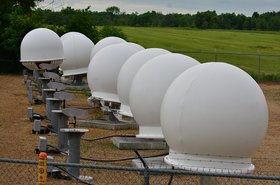Nokia has secured a contract with Claro Argentina to support the carrier's 5G infrastructure deployment in the country.
The vendor will be the sole 5G provider for Claro, which will initially focus on Argentina's largest cities.
Nokia confirmed it will provide its 5G AirScale products for Claro's 5G rollout, including base stations, baseband units, and its latest generation of Massive MIMO radios.
5G technology is tipped to support a range of sectors in Argentina, including manufacturing, and oil and gas. Nokia said it will also offer planning, deployment, integration, and network optimization services.
The vendor has previously deployed 2G, 3G, and 4G services for Claro.
As part of the rollout, Claro will become the first telco in Latin America to deploy Nokia’s Interleaved Passive Active Antenna (IPAA+) across its entire footprint.
The IPAA+ product is modular in its design and supports a wide range of frequencies, from 700 MHz to 2.6 GHz, and the 3.5 GHz 5G band with a compact antenna solution.
Nokia claims that IPAA+ can help service providers overcome the issue of finding additional space on towers and rooftops to add 5G antennas.
"The investment in our 5G network with our partner, Nokia, confirms our technology leadership and commitment to innovation," said Julio Carlos Porras, CEO at Claro Argentina.
"It will continue to digitize society by bringing high-speed connectivity, increased capacity, and seamless connectivity to densely populated areas supporting citizens and enterprises alike. This will enable unprecedented levels of innovation and efficiency across various sectors, empowering organizations to thrive in today's fast-paced digital landscape."
Last week, Claro announced plans to build a $30 million data center in Buenos Aires, Argentina.
Located at 77 Brasil Street, the data center is forecast to span 1,300 sqm (14,000 sq ft). Other specifications have not yet been shared, although the company said it will be one of the largest modular data centers in the capital.
The facility also features an integrated monitoring system allowing it to be operated remotely. Construction has already begun and is expected to be completed by 2026.







